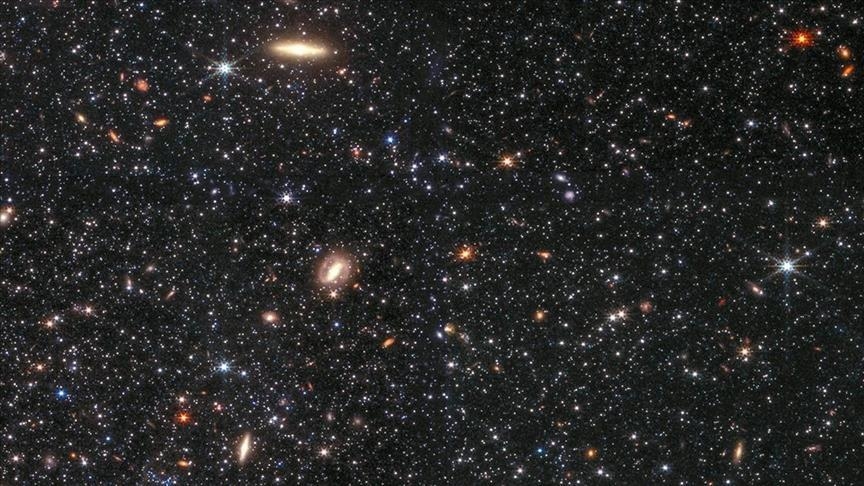ANKARA
Scientists analyzing photographs taken by NASA’s James Webb Space Telescope have spotted three bright supermassive objects that could be “dark stars.”
Citing an article published in the Proceedings of the National Academy of Sciences, US-based business magazine Forbes reported that the three objects that initially resembled galaxies, look like diffuse puffy objects resembling dark stars on closer inspection.
According to the report, these dark stars have been theoretical until now and are thought to be up to 10 billion times as bright as the sun, and “existed early in the universe before the kinds of stars we see today could form.”
“If the three candidate ‘dark stars’ are real—JADES-GS-z13-0, JADES-GS-z12-0 and JADES-GS-z11-0—then as well as revealing dark matter it would help cosmologists solve a riddle about JWST’s images of ‘cosmic dawn’,” the report said. “It’s finding lots of galaxies that are too big to exist so soon after the Big Bang, if the standard model of cosmology is to be believed.”
Forbes also quoted the co-author of the research and the director of the Weinberg Institute for Theoretical Physics, Katherine Freese as saying: “Discovering a new type of star is pretty interesting all by itself, but discovering it’s dark matter that’s powering this—that would be huge.”
Forbes reported that dark matter accounts for approximately 85% of matter in the universe, and remains one of the deepest unsolved problems in physics.
According to NASA, in cosmology, no problem looms larger than the elusive nature of dark matter. “Dark matter is composed of particles that do not absorb, reflect, or emit light, so they cannot be detected by observing electromagnetic radiation” and it is a “material that cannot be seen directly.”
“We know that dark matter exists because of the effect it has on objects that we can observe directly,” it added.

